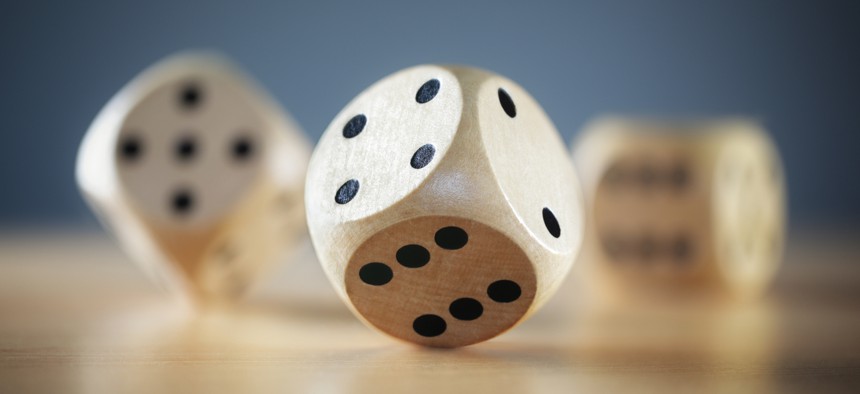
Brian A Jackson/Shutterstock.com
Cognitive Limits Mess up Decisions Based on Chance
Cognitive limitations lead to skewed perception of probability that can cause disastrous decisions, researchers say. But we also compensate to get by.
Our cognitive limitations lead to probability distortions and to subsequent errors in decision-making, according to new research.
The chances of a commercial airliner crashing are vanishingly small—and yet many people are uncomfortable flying. Vaccination for many common childhood diseases entail almost no risk—but parents still worry.
Human perception of probabilities—especially very small and very large probabilities—can be markedly distorted and these distortions can lead to potentially disastrous decisions.
But why we distort probability is unclear. While the question has been previously studied, there is no consensus on its causes.
For the new study, researchers developed a model of human cognitive limitations and tested its predictions experimentally.
The researchers initiated the analysis by examining the nature of distortions as a potential clue for explaining this phenomenon.
“Probability distortion limits human performance in many tasks, and we conjectured that the observed changes in probability distortion with task was a kind of partial compensation for human limitations,” explains Laurence Maloney, a professor in the psychology department and Center for Neural Science at New York University.
“A marathon runner with a sprained ankle will not run as well as she might have with ankle intact, but the awkward, limping gait we observe could in fact be an optimal compensation for injury,” Maloney says.
The key step in the model is the recoding of probabilities that depends on the range of probabilities in a task.
“Much like a variable magnification microscope, the brain can represent a wide range of probabilities, but not very accurately, or a narrow range at high precision,” explains Maloney.
“If, for example, a task involves reasoning about the probability of various causes of death, for example, then the probabilities are all very small (thankfully) and small differences are important. We can set the microscope to give us high resolution over a limited window of very small probabilities. In another task we might accept less precision in return for the ability to represent a much wider range of probabilities.”
The researchers set out to test this model in two experiments, one in which subjects made typical economic decisions under risk (e.g. choosing between a 50:50 chance of $200 and the certainty of $70) and one involving judgements of relative frequency (the relative frequency of black and white dots appearing on a computer screen).
The two experiments together tapped into the basic ways we use probability and frequency in everyday life. The researchers found that their model predicted human performance far better than any previous model.
They discovered that—like the marathon runner—people’s limitations were costly but, subject to those limitations, we do as well as we possibly can.
Zhang and Ren are part of Peking University’s School of Psychological and Cognitive Sciences;
The research appears in the Proceedings of the National Academy of Sciences. Additional researchers from Peking University contributed to the research.
The National Eye Institute of the National Institutes of Health supported the research.
Source: NYU
This article was originally published in Futurity. Edits have been made to this republication. It has been republished under the Attribution 4.0 International license.






